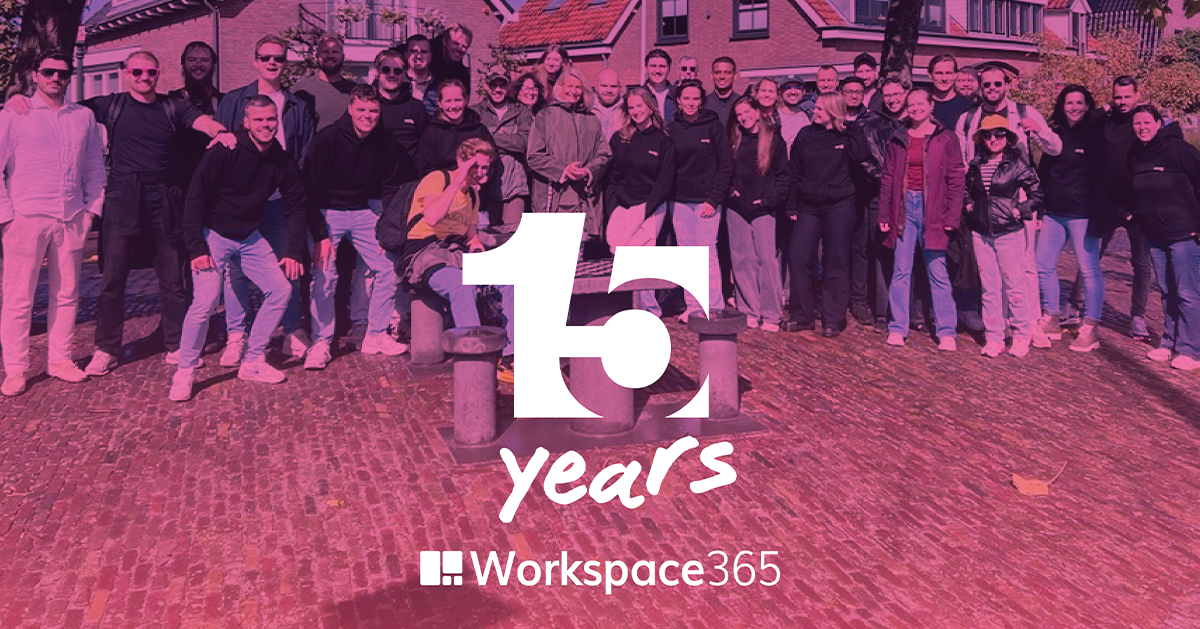Virtual workplace and digital workspace: these are terms you hear a lot when it comes to remote working. What do they have in common? It's all about digital environments that facilitate people working anywhere and anytime. What exactly are the differences between a virtual workplace and a digital workspace? What is the role of the digital workspace within the virtual workplace? And what is meant by a fully digital workspace?
The virus and the great shift to the digital world
For a decade or two, people have already been talking about teleworking and the New World of Work. However, since the coronavirus suddenly forced everyone to stay at home in March 2020, location-independent working has really been back on the map. Companies invested massively in technologies such as digital workstations and VPNs.
Now that hybrid working seems to be the new norm in the business world, the digital workspace remains an important theme for organisations. After all, office workers spend much of their day working in this digital environment, so small optimisations can lead to big results. It makes the question all the more relevant: is there a difference between a virtual workplace and a digital workspace?
Virtual workplace: working without geographical boundaries
The term virtual workplace is not used very often these days. It refers to a digital workspace that is not situated in one physical space and that is accessible regardless of one's geographical location. In other words: a virtual workplace enables mobile working: users can carry out their daily tasks whenever they want, wherever they are. Central to the virtual workplace is the integration of hardware, people and (online) processes.
The term virtual workplace should not be confused with the term virtual office. That is mainly used for flexible physical workspaces where you can get all office facilities such as a postal address and printer on-demand without having to run your own office. The term virtual office is now also being used for virtual reality applications for creating a virtual office environment. There, you can use virtual reality technology to meet others and work 'side by side' with them.
Digital workspace: tools for time and place independent work
A digital workspace is, as it were, a collection of software tools that together form a 'workspace' with which people can work and collaborate virtually - i.e., online - wherever and whenever they want. A digital workspace contains all possible technologies and tools that employees need to carry out their daily tasks. These include software for e-mail, instant messaging, word processing, spreadsheets and intranets, as well as productivity tools, social tools, CRM, HR and ERP systems and an online workforce.
According to broader definitions (such as by Deloitte) it not only includes software tools, but the digital workspace concept also includes the following layers:
- Hardware such as laptops, phones, tablets and home offices.
- A culture within the organisation that determines how the digital workspace is used.
- A governance model that supports collaboration and connectivity while ensuring compliance and mitigating risk, including employee training and certification.
- A well-designed and accurately implemented digital workspace creates, among other things, new and more effective ways of working, higher employee engagement and more agility within an organisation.
The difference between a virtual workplace and a digital workspace
So, what is the difference between a virtual workplace and a digital workspace? On paper, the virtual workplace is broader in scope than a digital workspace because it also focuses on people and processes. In that sense, the digital workspace is the technological base for the virtual workplace. In practice, however, the terms are often used as synonyms, with digital workspace now being the most common designation.
Role of digital workspace in virtual workplace
The digital workspace therefore plays a crucial role in the virtual workplace. After all, it ensures that people always have secure access to applications, information, documents and the intranet, allowing them to work and collaborate online.
As a result, a digital workspace stimulates efficiency, innovation and growth. It smooths out communication and can even bring about a cultural shift, serving as the basis for a transformation to a digital-first or data-driven organisation. It also improves productivity, employee satisfaction and staff retention, and is good for attracting new talent. Most people are willing to forgo salary if they do not always have to work in the office.
Finally, the digital workspace is an important requirement for hybrid working. It allows employees to seamlessly switch between working in the office and at home by easily collaborating, communicating and connecting with colleagues and customers.
Virtual workplace is not the same as virtual desktop
It is worth noting that the term virtual workplace should not be confused with the concept of virtual desktop. The latter refers to desktop virtualisation technology, i.e., software that simulates an environment or other technological resource. This makes it possible to run various operating systems and applications on one server without installing them on a separate device. Well-known suppliers include Citrix, Microsoft (Azure Virtual Desktop) and VMWare.
There is, however, a connection between the two. With virtual desktop, users have access to a 'desktop' without having to install the programmes and other applications, allowing employees to work and collaborate remotely. This technology was especially important in the era before the massive cloud transformation for realising location independent working in companies.
A complete digital workspace with Workspace 365
Most people associate a digital workspace with a portal that allows you to access all applications with a single click. The disadvantage of a digital workspace in this form is that the page gets longer and longer as more tiles for applications and messages are added. As a result, users spend longer and longer searching for and switching between applications and data.
What is the solution? A complete digital workspace, such as Workspace 365. The "complete" aspect of this adaptive and dynamic workspace rests on three pillars:
1. More than applications alone
With Workspace 365, you not only have all your relevant applications in one environment, but all your data, documents, tasks, processes and the intranet are integrated and personalised in one environment. For example, the Activity Feed lets you integrate your most important tasks and notifications, and you can even create your own activities using systems such as Zapier and Microsoft Power Automate.
2. Integrating external systems of parts thereof
With Workspace 365, you can extract important tasks, information and processes - for both individuals and user groups - from external systems and then deliver them intelligently, in a way and at a time that is relevant to the user. One way this is expressed is through Micro Apps, or mini-applications within the digital workspace. Via these, you can quickly view information from external applications and complete tasks from those apps without leaving the workspace.
3. Personalisation
Finally, personalisation is central to Workspace 365: what is shown on the dashboard depends on, for example someone's role, location, network and device, amongst others.
The result? A fully digital workspace that is built on these three pillars leads to higher productivity, greater employee well-being and a better employee experience. In addition, it can help you boost your digital transformation and maximise the value of Microsoft 365.







